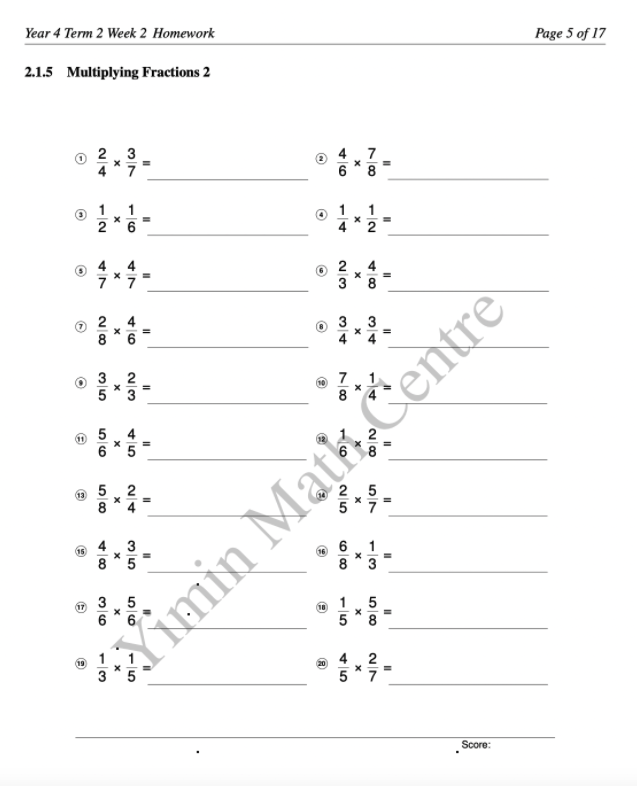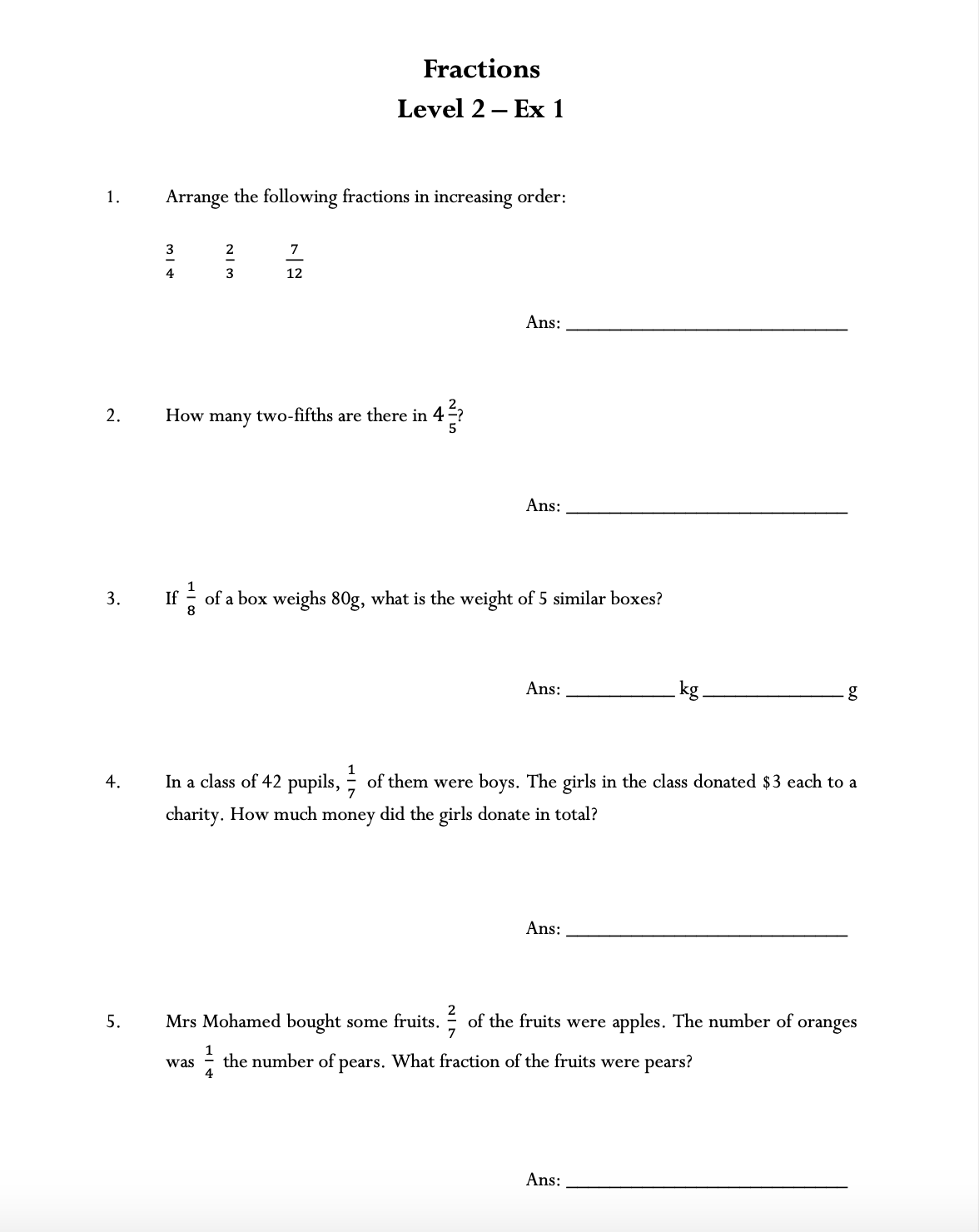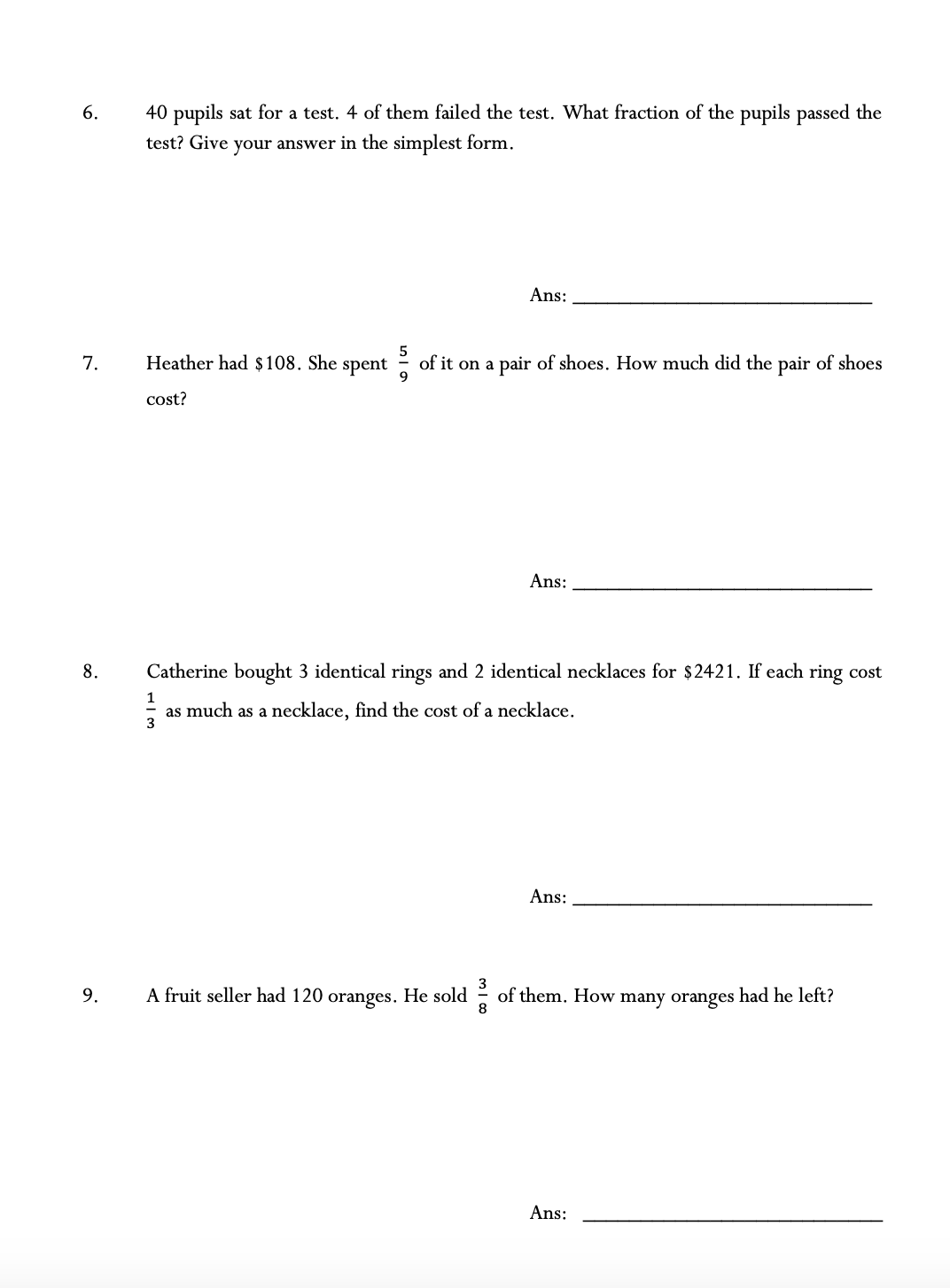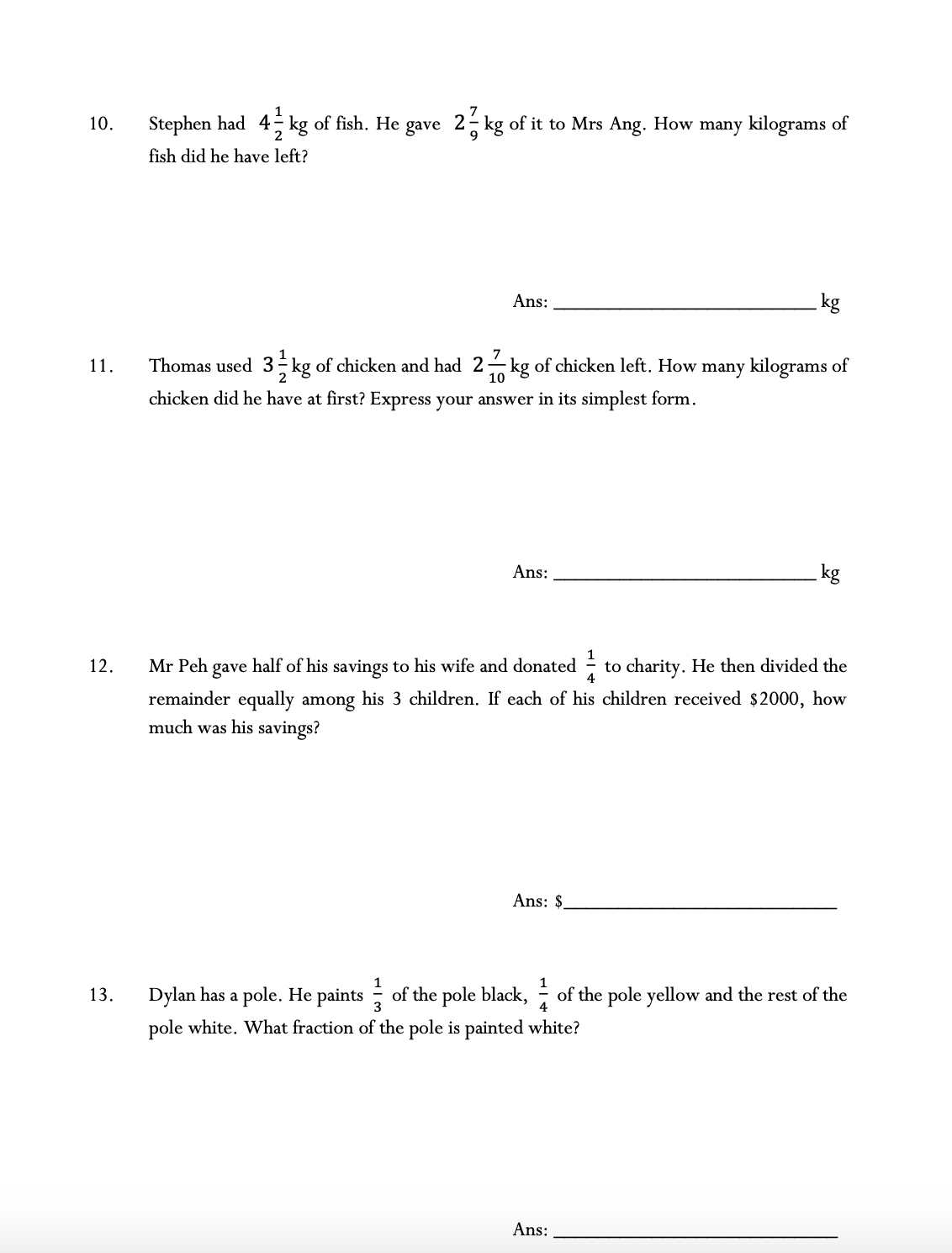Year 5 - Fractions Learning Path (Pink Profile)

Before starting this Learning Path
Before starting this Learning Path, the student should have a basic knowledge of Fractions and understand how to add and subtract equivalent fractions.
Learning Outcomes
- Compare and order fractions
- Identify, name and write equivalent fractions of a given fraction, represented visually, including tenths and hundredths
- Use common factors to simplify fractions; use common multiples to express fractions in the same denomination
- Add and subtract fractions with different denominators and mixed numbers, using the concept of equivalent fractions
- Multiply simple pairs of proper fractions, writing the answer in its simplest form
- Divide proper fractions by whole numbers
- Associate a fraction with division and be able to divide simple fractions
General teaching tips:
Emphasise order, method, neatness to their workings and organisation to avoid silly mistakes often associated with the Pink Profile - These students tend to be overconfident in their Fraction skills so tutors are recommended to test for the student's conceptual understanding of Fractions through Word Problems to ensure their full understanding prior to moving on.
Step 1:
Name: Equivalent fractions
Learning outcomes:
- Identify, name and write equivalent fractions of a given fractionincluding tenths and hundredths (ENCY5)
- Compare and order fractions whose denominators are all multiples of the same number (ENCY5)
Challenge question
Use this worksheet to challenge students with the Pink Profile straightaway. At this point, we would recommend letting these students figure out the questions on their own, without any hints.You can expect students with the Pink Profile to be quite binary in their answers - either complete in their understanding and method from the start, or missing all of the questions. For a deeper challenge, remove the simplest form of the fraction (the first fraction) on each question. The student should understand that they have to simplify the fraction before equating it.
Worksheet: Equivalent Fractions D 2

Step 2:
Name: Add/subtract unlike fractions
Learning Outcomes:
- Solve problems involving increasingly harder fractions to calculate quantities, and fractions to divide quantities, including non-unit fractions (ENCY4)
- Compare and order fractions whose denominators are all multiples of the same number (ENCY5)
- Add and subtract fractions with different denominators and mixed numbers (ENCY6)
Word problems
Unlike other profiles, the Pink Profile rarely struggles with their numeracy and arithmetic skills. They tend to get questions wrong from rushing and misreading them.Therefore, use these simple word problems as a vehicle to test their adding and subtracting of harder Fractions. They may complain about the amount of words on the page, but you can expect these students to complete this sheet quickly without asking many questions.
Worksheet: Add subtract fractions W 1


Step 3:
Name: Multiply proper fractions
Learning Outcomes:
- Multiply simple pairs of proper fractions, writing the answer in its simplest form (ENCY6)
Introduce concept
Your students may need a quick reminder on multiplying Fractions, but once they grasp it, should fly through these questions quickly.
Worksheet: Multiply proper fractions D 1

Step 4:
Name: Multiply/divide mixed fractions
Learning Outcomes:
- multiply proper fractions and mixed numbers by whole numbers (ENCY5)
- use common factors to simplify fractions; use common multiples to express fractions in the same denomination (ENCY6)
- compare and order fractions, including fractions > 1 (ENCY6)
- add and subtract fractions with different denominators and mixed numbers, using the concept of equivalent fractions (ENCY6)
- multiply simple pairs of proper fractions, writing the answer in its simplest form (ENCY6)
- divide proper fractions by whole numbers (ENCY6)
- solve problems involving the relative sizes of two quantities where missing values can be found by using integer multiplication and division fact (ENCY6)
Word problems
Use this sheet to explain the concept of multiplying a Fraction, using the third question to explain that multiplying by a Fraction really means a part 'of' a whole.
Worksheet: Multiply divide mixed fractions W 1



Step 5:
Challenge question
Prompt the students to complete these questions quickly by spotting a pattern or finding another way of solving the multiplication. If they do not spot it, show them the cross-cancelling method on one question and push them to complete the rest of the questions in the same way.
Step 6:
Name: Block method
Learning Outcomes
- Add and subtract fractions with different denominators and mixed numbers, using the concept of equivalent fractions (ENCY6)
- Solve problems involving the relative sizes of two quantities where missing values can be found by using integer multiplication and division facts (ENCY6)
Introduce concept
Use this worksheet to explain that simplifying a Fraction can be used to solve long division questions. For example, the question 1848/231 can be done through 1848/231 = 616/77 = 88/11 =8. Help them understand how Fractions are similar to Ratios to appeal to their lateral thinking abilities. This will help them pick up the Ratios topic quickly.
Worksheet: Block method fractions W 1


Step 7:
Word problems
Use these questions to test their application of what they have learned. Encourage them to slow down and read the question fully before attempting it.
Step 8:
Introduce concept
Use this sheet to explain the concept of dividing by a fraction. To start, use the example of a cake. Eliza has half a cake and 3 friends. If she wants to give her friends equal slices of cake, how much of the cake would each friend receive? To expand, use the notion of piano lessons - if my piano lessons are 3/4 of an hour and I have 10 hours, how many piano lessons would I have? This step should take about half an hour.
Step 9:
Recap
Encourage these students to show each step of their working and work through all the questions methodically.Once you are comfortable that they have understood the method, you can show them a quick way of dividing fractions through finding common factors of the fraction and cross cancelling them.
Step 10:
Sum up
Use this worksheet as a sum-up of the topic. Start off the sheet in the session and set the rest of it for homework as students should be familiar with all the concepts in the pack.


























Learning path completed
Learning path completed
Learning path completed
Learning path completed
Learning path completed